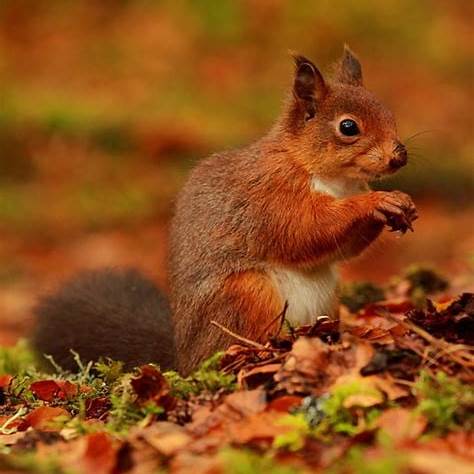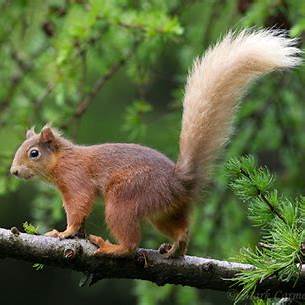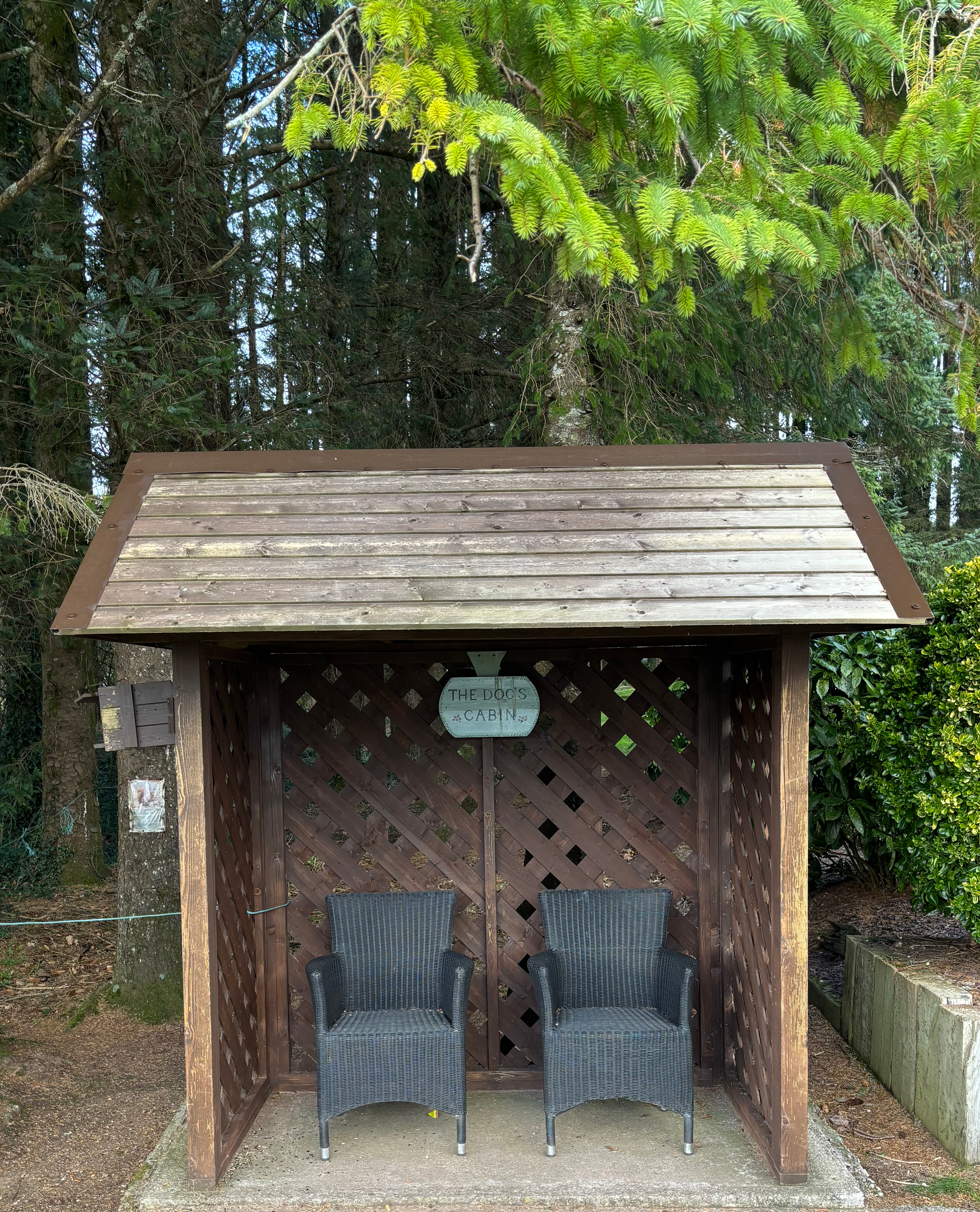The red squirrel is native to Ireland and has been here since at least the end of the last Ice Age.
Typical body size: about 18–20 cm in body length, with a tail of similar length, weight around 300–350 grams in Ireland.
Characteristic features: often reddish coat (though can be brownish/grey in winter), bushy tail, tufts on the ears (especially notable in winter).
Habitat: They live in woodland — coniferous, deciduous, or mixed. They spend much of their time in the tree canopy rather than on the ground.
Diet: Primarily tree seeds (e.g., pine/cone seeds, hazelnuts), buds, fungi, some fruit. They also store food (‘cache’) to use when resources are scarce.
Reproduction: Females may give birth to litters of 1-6 young in spring; young become independent after about 7-10 weeks.
Behaviour: They do not hibernate. In winter they rely on stored food and their nest (drey) for survival.




